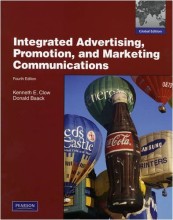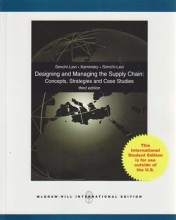7s model
37 important questions on 7s model
Strategy: What is a strategy?
Strategy: Give the characteristics of the BUS level strategy?
Affects the entire division
Made by divisional-level executives
Maybe affected by corporate-level strategy
Involve huge capital investment
May take years to get
Skills: Give an brand example by operational excellence?
- Higher grades + faster learning
- Never study anything twice
- 100% sure, 100% understanding
Systems: Explain product development strategy?
Systems: Explain the sales and marketing strategy?
Marketing: What is the difference between integration by ownership and relational integration?
- Relational integration is that you (as a company) outsource everything but you have totally control over it.
- Outsource: you do nothing by yourself > logistic
Marketing: What are two of the four dimensions of dependency?
- Transaction specifics investment: which (company or people) is more important for a good relationship with other small companies
- Alternative exchange possibilites
Marketing: According to Coughlan et al. what is the first and most important reason for an intermediary to exist?
Staff/style/shared: What do we mean with the symbolic view of the management?
Staff/style/shared: What do we mean with the omnipotent view?
Staff/style/shared: explain the theory from hetzberg?
Motivation: achievement, growth, work itself
Hygiene: salary, security, company policy
Systems&skills: mention some elements of a lean supply chain strategie?
- low cost modes of transport
- minimise inventory to lower cost
Systems&skills: mention some elements of a agile supply chain strategie?
- reduce lead times even if cost is involved
- responsive modes of transport
Systems and skills: What tells ROCE?
Systems: Explain the supply process?
PUSH
Forecast driven
Systems: Explain the demand process?
PULL
customer order driven
Systems: explain the different between lean and agile strategies?
Agile: speedy reaction to a dynamic/unpredictable market
Systems: where can you find the capital employed?
Systems: what does the cijfer means by the inventory turnover?
Systems: explain the inventory turnover?
Systems & skills: what are the methods for the strategic decision making?
- The 4 drivers
- Decoupling point position
- Lean and agile strategies
Marketing: Explain channel functions?
- selling (demand generation)
- physical distribution
- after-sales service
- credit
Marketing: give some examples of problems with hard integration or ownership?
- channel conflict
- higher exit barriers
- high capital investments
- different managerial requirements
- burocracy - lack of motivation
- shift from core competency
Marketing: what are the alternatives to hard integration?
Sometimes its impossible to integrate vertically
Marketing: explain the different relationship typologies?
ii. Partnership / join forces: make adaptable contracts, invest in new possibilities > long-term
iv. transactional / exploit: MRO good, make clear contracts and invest in efficiency
iii. Co-operative automate: commodities, negotiate hard
Marketing: give examples of managing channel relationships?
- power (sources)
- trust
- shadow of the future
- outcomes
Marketing: give examples of the dependency?
supplier dominance
buyer dominance
low mutual dependency
Marketing: What are the influence strategies?
- rewards (promised and exercised)
- punishments (threats and exercised)
- reference (knowledge)
- identification (a-brand)
SWOT/TWOS: How the make a swot analysis?
External analysis: opportunity & threats
SWOT/TWOS: what is the goal of a SWOT/TWOS?
SWOT/TWOS: what are the difference between SWOT/TWOS?
SWOT/TWOS: What is a swot?
SWOT/TWOS: Give some internal factors?
physical resources
financial
activities and processes
past experiences
SWOT/TWOS: give some external factors?
the economy
funding sources
demographics
legislation
local, national or international events
SWOT/TWOS: what are the most common mistake in SWOT?
SWOT/TWOS: what are strengths and weaknesses?
SWOT/TWOS: what are opportunities and threats?
The question on the page originate from the summary of the following study material:
- A unique study and practice tool
- Never study anything twice again
- Get the grades you hope for
- 100% sure, 100% understanding































